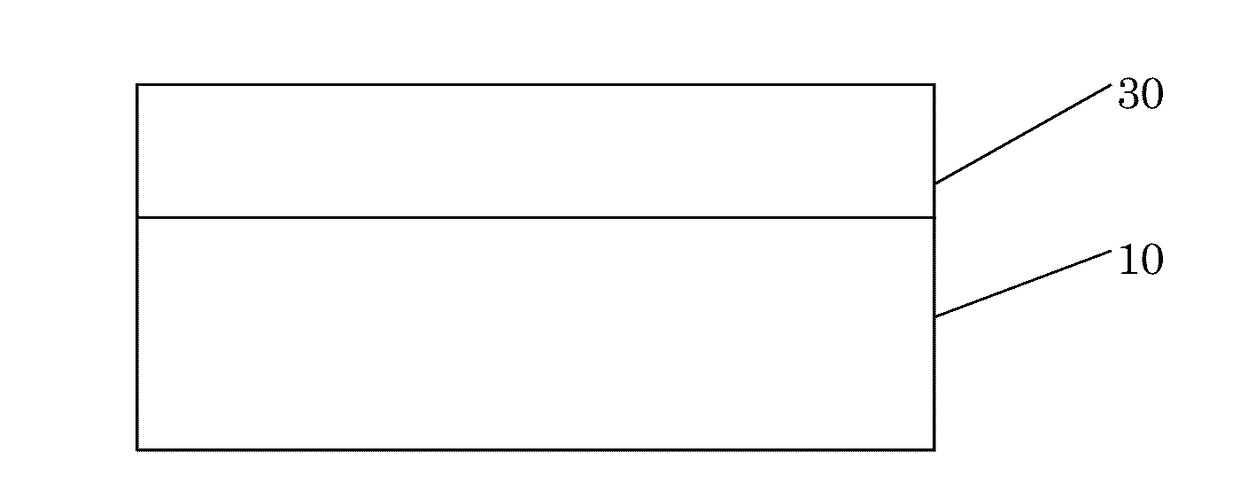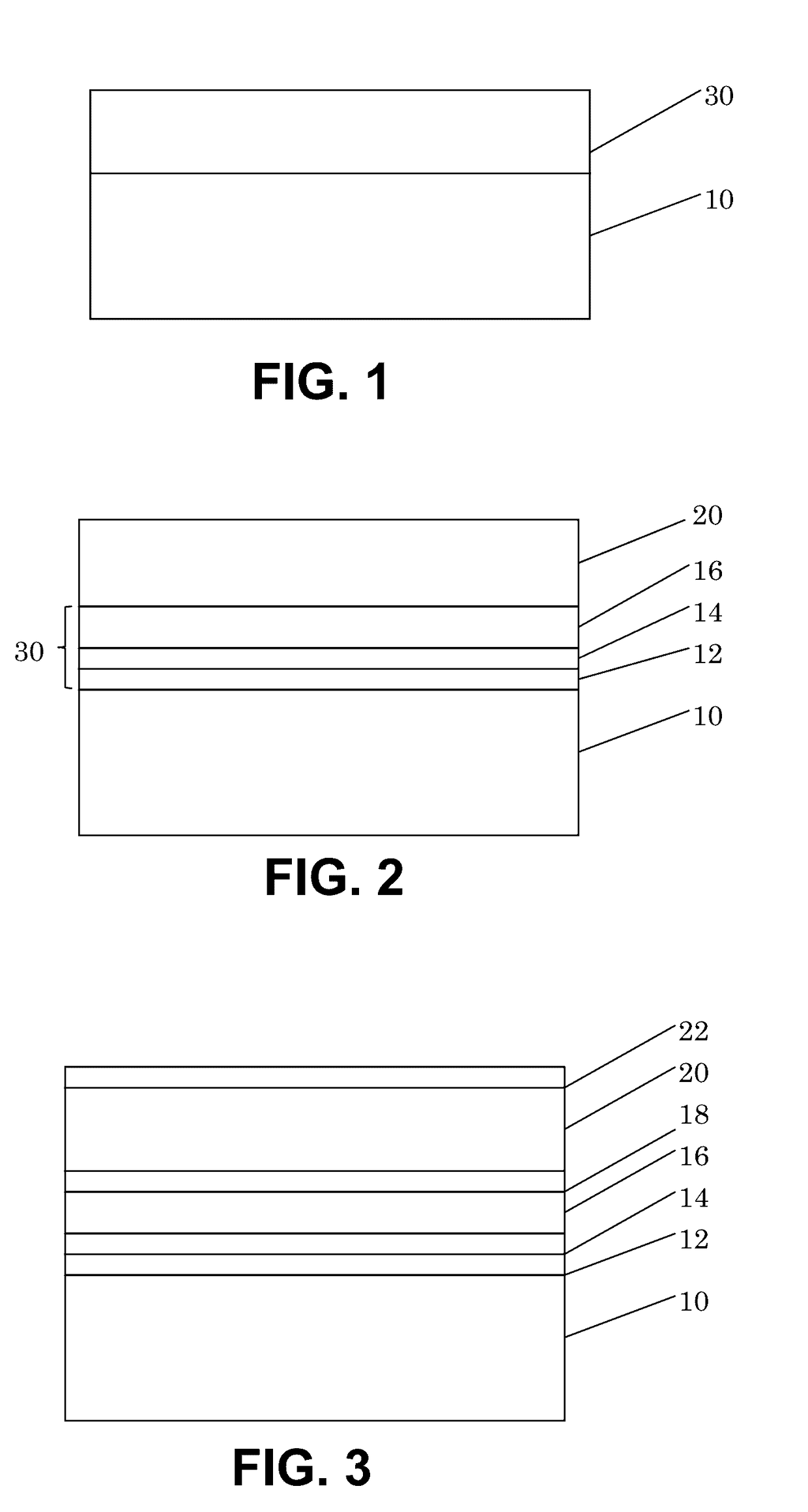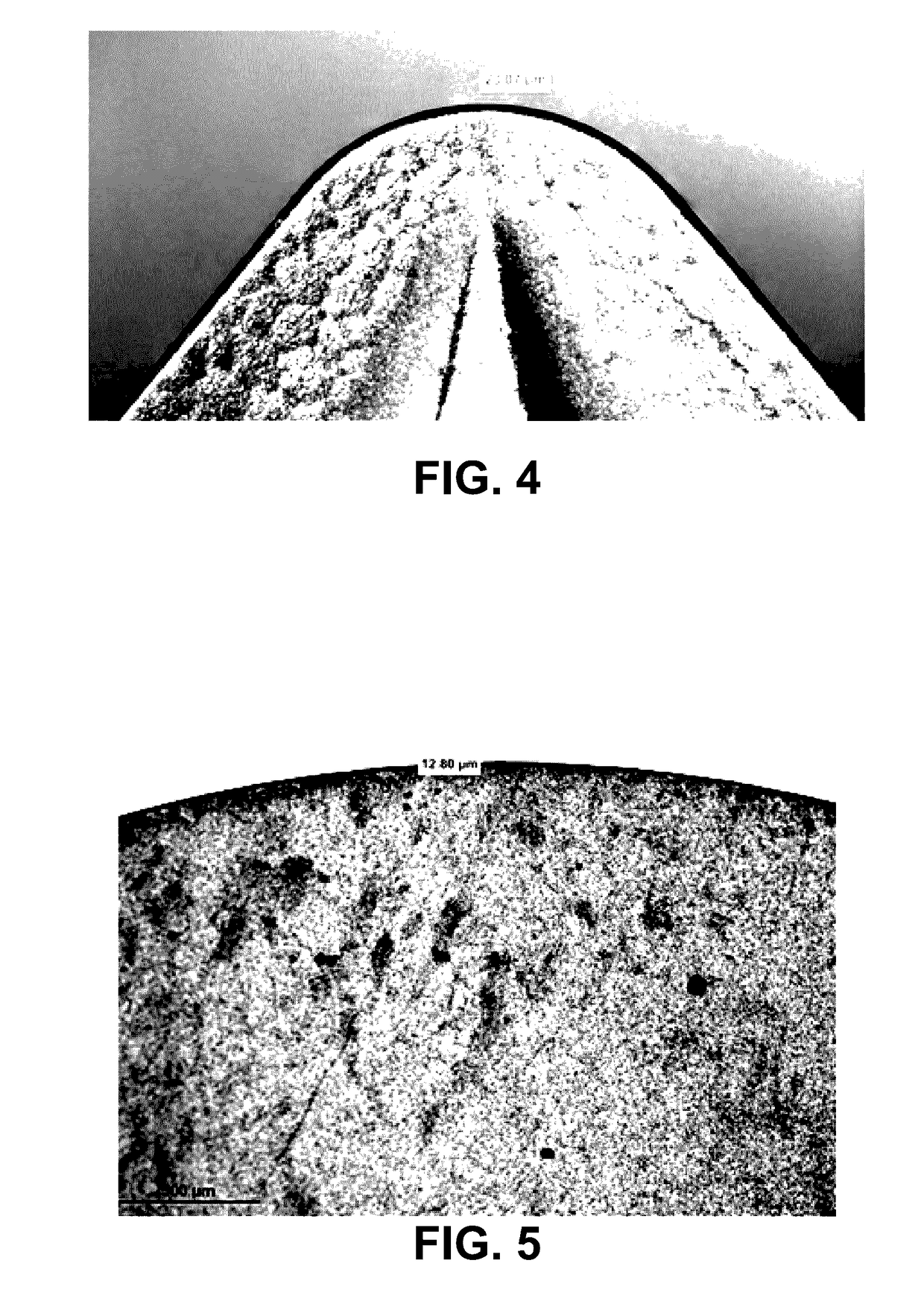Nanostructured Coated Substrates for Use in Cutting Tool Applications
- Summary
- Abstract
- Description
- Claims
- Application Information
AI Technical Summary
Benefits of technology
Problems solved by technology
Method used
Image
Examples
example 1
[0046]In this case study, two cutting tool inserts were compared using semi-finish OD turning of rings of Inconel 718 alloys. The first insert was an RPGN-3V carbide grade (C2) substrate with up sharp edge in uncoated form. The second insert was a RPGN-3V carbide insert with a multiple-layer nanostructured coating according to the present invention. The nanostructured coating (TM20) comprised the following layered coating: TiN—TiCN(1)-TiCN(2)-α-Al2O3 with the first three layers in nanostructured form and the additional alumina layer in non-nanostructured form. The total thickness of the coating layer was 5-9 μm. The second insert comprised an edge of 10-20 μm. The tools were used at a surface speed of 200-225 SFM, a feed rate of 0.012 IPR, and a depth cut of 0.01″. The failure criteria selected were 0.025 mm flank wear and surface quality (surface finish and waviness) of workpiece quantified using surface profilometer and acoustic method. The results show a drastic increase in tool ...
example 2
[0047]In this case study, two cutting tool inserts were compared using OD turning of a low pressure turbine case made of aged 718 alloys. The first insert was a CVD coated RCMT43 S05F carbide grade (C2) substrate with an edge hone of 25-35 μm. The second insert was an RCMT43 TS2020 carbide insert with a multiple-layer nanostructured coating according to the present invention, where the substrate comprised a micron-grain carbide substrate with hardness of 92.4 and cobalt binder percentage of 6.1%. The nanostructured coating (applied by CVD) comprised the following layered coating in sequence: TiN—TiCN(1)-TiCN(2)-α-Al2O3 with the first three layers in nanostructured form and the alumina layer in non-nanostructured form. The total thickness of the coating layer was 9-13 μm. The second insert comprised an edge hone of 12-25 μm. The tools were used at a surface speed of 180 SFM, a feed rate of 0.012 IPR, and a depth cut of 0.04″. The failure criteria selected were 0.025 mm flank wear and...
example 3
[0048]Cutting tests were performed in connection with a target material of American Iron and Steel Institute (AISI) 4340 hardened steel with severe interruptions. The inserts used for testing were CNMA432 carbide turning inserts, coated with nanostructured coatings in multi-layered form (individual nanostructured layers 12, 14, and 16) and with additional layers 18, 20, and 22 as described above. A benchmark test was performed using the same type of insert (same style and grade) coated with conventional coating techniques with similar chemistry but micron-sized grains in each of the coating layers. The workpiece used was a material with a diameter of 6.0″, with four deep, V-shaped slots in the peripherals to provide interruptions for testing, along with four ⅜″ diameter through-holes evenly distributed on the end surface. Machining conditions were as follows:
[0049]Surface speed: 400 SFM
[0050]Feed rate: 0.0004 IPR
[0051]Depth of cut: 0.01″
[0052]Dry / wet: with cutting fluid
[0053]Failure...
PUM
| Property | Measurement | Unit |
|---|---|---|
| Fraction | aaaaa | aaaaa |
| Thickness | aaaaa | aaaaa |
| Thickness | aaaaa | aaaaa |
Abstract
Description
Claims
Application Information
 Login to View More
Login to View More - R&D
- Intellectual Property
- Life Sciences
- Materials
- Tech Scout
- Unparalleled Data Quality
- Higher Quality Content
- 60% Fewer Hallucinations
Browse by: Latest US Patents, China's latest patents, Technical Efficacy Thesaurus, Application Domain, Technology Topic, Popular Technical Reports.
© 2025 PatSnap. All rights reserved.Legal|Privacy policy|Modern Slavery Act Transparency Statement|Sitemap|About US| Contact US: help@patsnap.com



